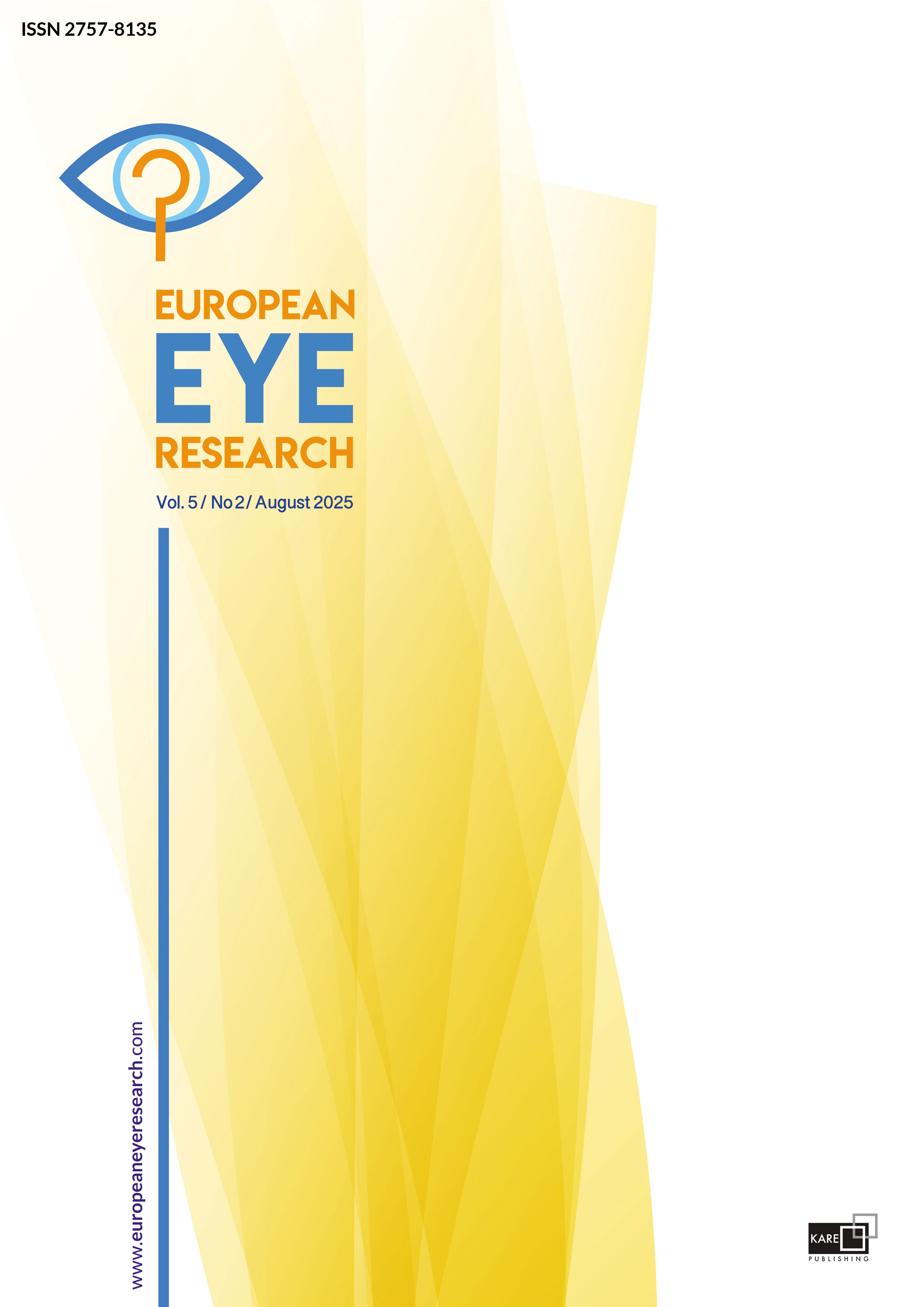

Assessment of meibomian glands with topography in patients using unilateral antiglaucoma drops
Abdullah Albakeri, Arzu Taşkıran ÇömezDepartment of Ophthalmology, Canakkale Onsekiz Mart University Faculty of Medicine, Canakkale, TurkeyPURPOSE: The study aims to evaluate the function and morphology of the meibomian glands and tear function tests in patients with unilateral glaucoma.
METHODS: The files of 1100 glaucoma patients attending, Ophthalmology clinic from 2014 to 2018 were screened. In total, 38 eyes from 38 out of 84 patients using antiglaucomatous agents in one eye who abided by the criteria and accepted participation were included in the study. After general ophthalmologic examination including best corrected visual acuity, biomicroscopic and ophthalmoscopic examination, ocular surface disease index (OSDI) survey, tear osmolarity, noninvasive tear breakup time (NITBUT), meibography (MEBG) and lower lid tear meniscus height (TMH) measurement, followed by Schirmer test and tear breakup time (TBUT) were measured, respectively.
RESULTS: With mean age of 68.6±12.8 years, 13 patients (34.3%) were female and 25 were male (65.7%). Mean duration of medication use was 37.97 months with mean OSDI score of 33.76±16.2 C4.10–77). The difference between NITBUT and atrophy percentage of meibomian glands in glaucomatous and control eyes was identified to be significant (NITBUT: 9.08±2.98; 12.01±4.30; p=0.001, MEBG 41.15 ±14.04%, 28.33%±11.77%, p=0.001). A significant decrease was observed for TMH, TBUT and Schirmer test for eyes administered drops compared to control eyes (p=0.001; p=0.0001; p=0.009, respectively) and tear osmolarity was identified to be significantly high (p=0.0001).
CONCLUSION: In addition to the negative effects of topical antiglaucomatous drops on tear aqueous components, patients should be monitored for dry eye findings as closely as for intraocular pressure and popularizing the use of preservative-free medications is important in terms of patients’ treatment compliance.
Manuscript Language: English



